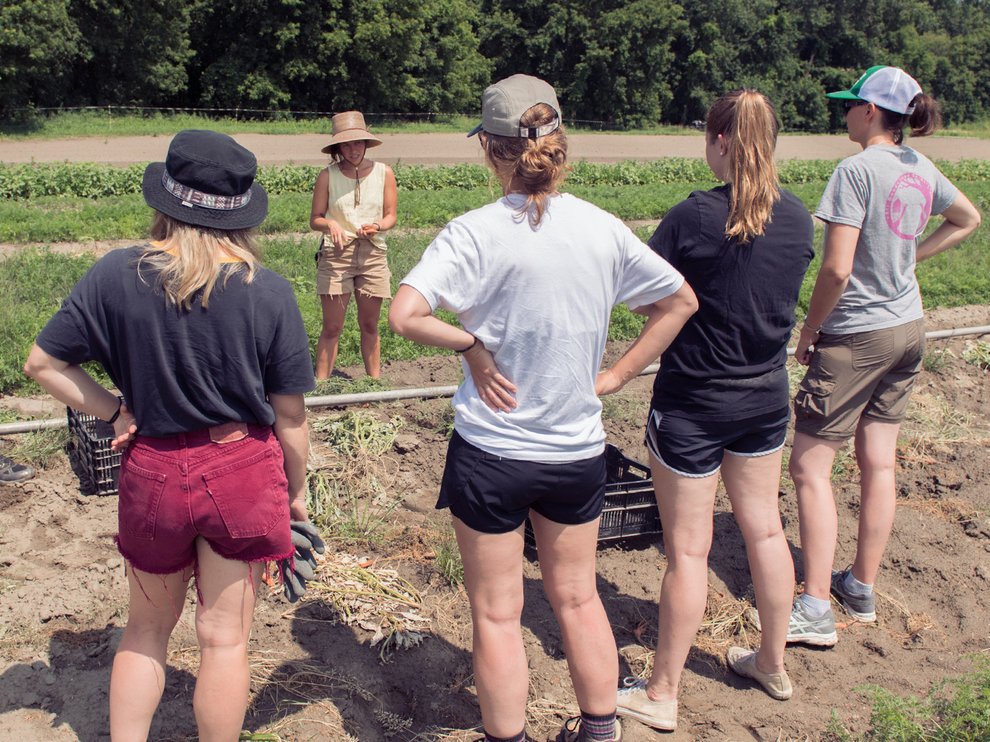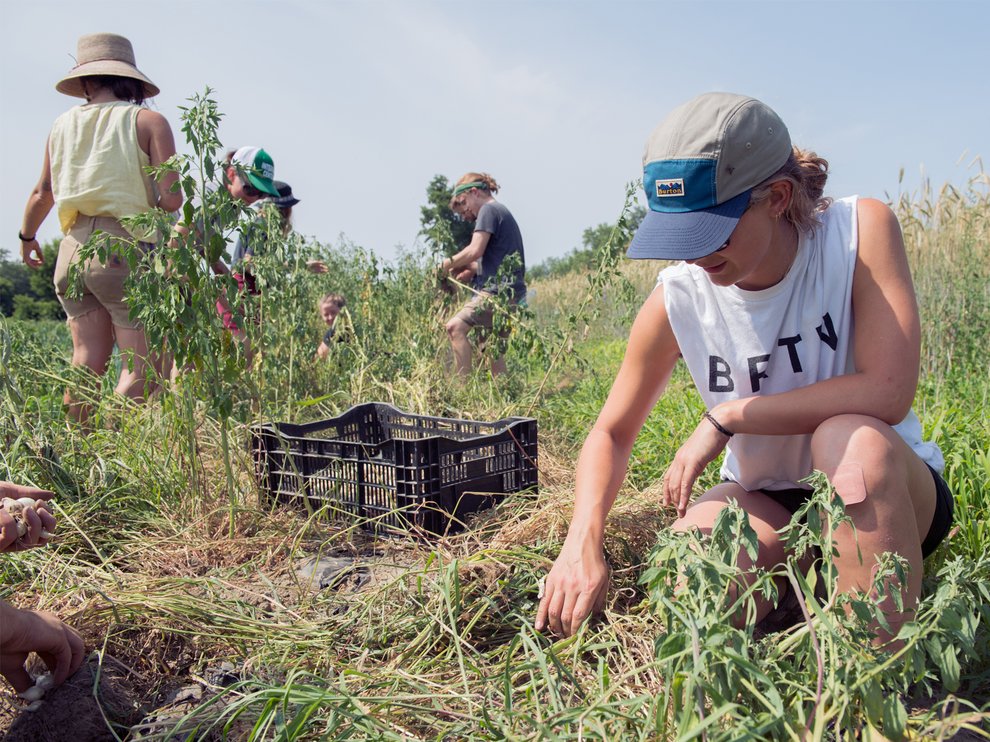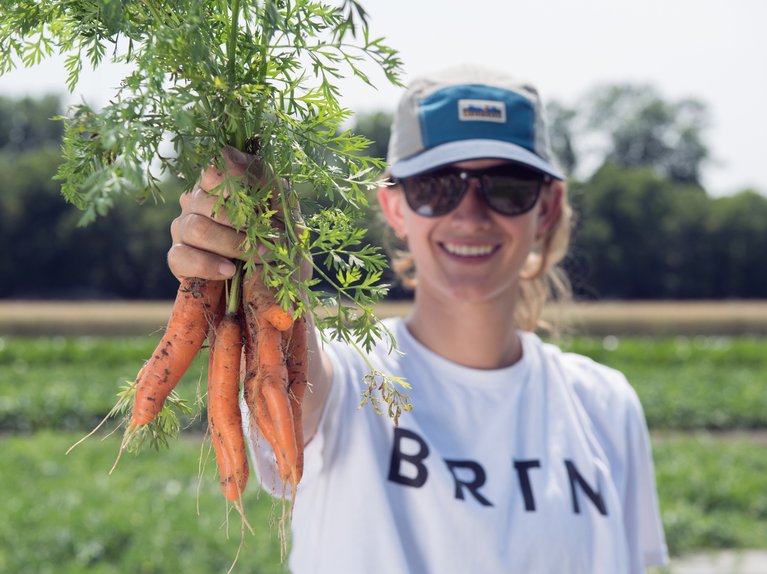Less Waste, More Food – Burton Goes Gleaning
If we’re being honest, trying new things can be daunting – whether it’s for work or play.

Having the right crew behind you makes all the difference. At Burton, we’re fortunate to have the WPA (Women’s Professional Association), which connects women within the company to their peers and mentors, providing the knowledge and support it takes to get involved in new spaces.
“As the co-chair of the WPA, I really wanted to focus on community outreach this year as one of our pillars,” says Emma Lenchner, Digital Project Manager. “We’re lucky enough to have access to such a variety of fresh vegetables every day, and I think it’s important to know this is a privilege not everyone in our area has.” With a focus on sustainability and outreach, we set our sights on a new challenge: gleaning at a local farm.
That term was new to many of us, but we quickly learned its importance. Gleaning is the old farming process of collecting the leftover food after a harvest. Sometimes it’s because the harvesting machines missed it, and sometimes it’s simply that the food wasn’t “pretty” enough for the supermarket. Whatever the reason, the truth of the matter is that too much food goes to waste.
Gleaning is the old farming process of collecting the leftover food after a harvest.


In Burton’s hometown of Burlington, Vermont, we have the Intervale Community Farm, a member-owned cooperative that produces food throughout the year. The overarching non-profit, Intervale Center, even has a Gleaning and Food Rescue program to distribute excess food to Vermonters who are at risk of hunger. With the Intervale right in our own backyard and entering its 30th year in service, we wanted to get our hands dirty and spread the wealth of veggies.

"We’re lucky enough to have access to such a variety of fresh vegetables every day, and not everyone is."


So we spent a Friday afternoon in the sun, picking up the abandoned carrots and baby onions and sorting them. We also loaded up a delivery truck with tons of excess squash the farm was donating. In the end, we saved 66 pounds of carrots and 37 pounds of pearl onions from the compost pile. It felt good to get dirty for the afternoon and know that we were helping the farm’s mission to provide fresh food to those in need.
This challenge felt like a mix of work and play, and we all agreed that we wanted to come back soon. Gleaning is a tradition we can get down with, and we’re glad we dug into it.
To help with food recovery in your area, check out the National Gleaning Project. ∆
